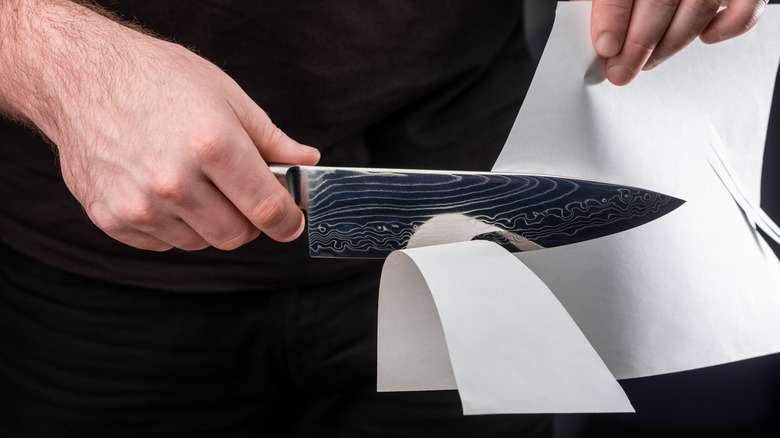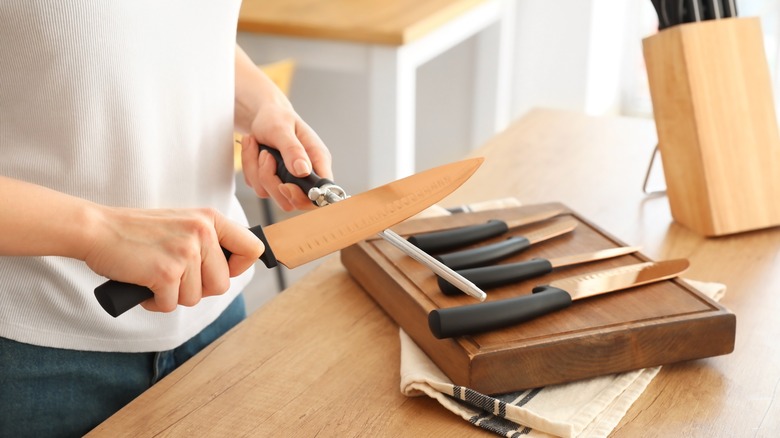All You Need Is A Piece Of Paper To Test Your Knife's Sharpness
Although the ingredients define the overall ethos of a dish, the tools you use to create it define its finesse and precision. While high-quality pots and pans, state-of-the-art ovens, and air fryers can help, it all starts at the top with the prep work. It's no secret that dicing and slicing is far easier with a well-sharpened knife. Knowing how to test the sharpness of your knife can determine if you need to get out the steel before meal-prepping, luckily, all you need is a piece of paper.
A sharp knife has an ultra-fine edge that should cleanly sever a sheet of paper. Similarly, a dull knife will struggle to make a clean cut through the paper, resulting in uneven edges and tearing. In this easy-to-perform knife test, the sheet of paper is analogous to your food — if you can't make a fuss-free cut through paper, then chopping onions becomes more tedious than usual (and makes it harder not to cry).
To determine if your knife is well-sharpened, take a sheet of paper and hold it up with your non-dominant hand before using your dominant hand to gently draw the blade from the top of the paper downwards, observing the ease with which it slices. If there is resistance, shredding, or an audible tearing sound this indicates a dull knife or one on its way to dullness.
Sharpening and maintaining a knife
Knives are one of the most important kitchen tools, and with a little TLC, your favorite knife will last a lifetime. Preserve the integrity of your knife by occasionally sharpening and honing it while committing to practices that help maintain its sharpness.
For starters, know the difference between honing and sharpening. Honing a knife is when you realign the edge using a honing rod to restore its sharpness. Sharpening a knife is when you remove material from the blade to create an entirely new edge using an abrasive tool like a sharpening stone or electric sharpener. If you frequently use your knife, consider honing it once a week. When you hone regularly, you only need to sharpen your knife one to three times per year. Not sure when it's time to sharpen? Grab a piece of paper, and, well, you know the drill.
The paper test is just one of many kitchen knife hacks you should know. You can keep your knife sharp for longer periods by cultivating a few good habits. Clean and dry your knife as soon as you're done using it to prevent bacteria build-up and the development of rust. Use wood, plastic, and polyethylene cutting boards and avoid storing the knife around other metal utensils and cutlery to prevent metal-on-metal contact, which quickly dulls a knife.

